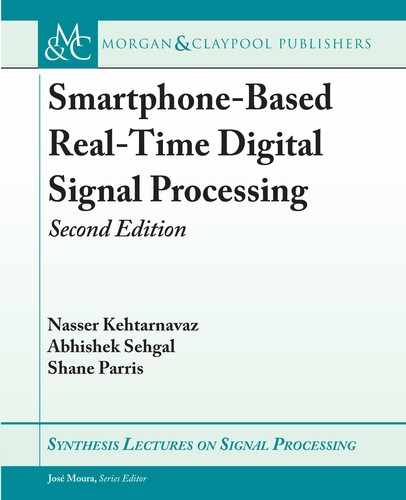
4.2. QUANTIZATION 55
4.2 QUANTIZATION
An A/D converter has a finite number of bits (or resolution). As a result, continuous amplitude
values get represented or approximated by discrete amplitude levels. e process of converting
continuous into discrete amplitude levels is called quantization. is approximation leads to
an error called quantization noise. e input/output characteristic of a 3-bit A/D converter is
shown in Figure 4.6 to see how analog values get approximated by discrete levels.
111
010
101
100
011
010
001
000
1/2LSB
-1/2LSB
Digital Output
Analog
Input
Analog
Input
(a) (b)
Quantization Error
0
0
1 2 3 4 5 6 7
1 2 3 4 5 6 7
Figure 4.6: Characteristic of a 3-bit A/D converter: (a) input/output static transfer function and
(b) additive quantization noise.
e quantization interval depends on the number of quantization or resolution level, as il-
lustrated in Figure 4.7. Clearly, the amount of quantization noise generated by an A/D converter
depends on the size of quantization interval. More quantization bits translate into a narrower
quantization interval and hence into a lower amount of quantization noise.
x(t)
t
Figure 4.7: Quantization levels.
..................Content has been hidden....................
You can't read the all page of ebook, please click here login for view all page.
